John Maclean's Pollokshaws
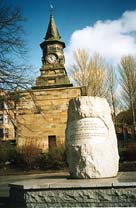 On the anniversary of his death in 1923, Ian R. Mitchell looks at the place where John MacLean was born and died.
On the anniversary of his death in 1923, Ian R. Mitchell looks at the place where John MacLean was born and died.
Eighty years ago, five thousand people marched south from Eglinton Toll in Glasgow the four miles to Eastwood cemetery, passing through the district of Pollokshaws. There on 30 November 1923 possibly the most loved - and probably also most hated - man in Scotland, John MacLean, had died. Many thousands more lined the streets to pay tribute to a person whose life ended prematurely at 44 from overwork, the effects of imprisonment and - eventually - from near-starvation.
Fifty years thereafter, in 1973, a memorial was elected near the Old Town House of Pollokshaws, to the district's most famous son, which stated simply:
In Memory of John Maclean
Born in Pollokshaws on 24th August 1879
Died 30th November 1923
FAMOUS PIONEER OF WORKING CLASS EDUCATION
HE FORGED THE SCOTTISH LINK IN THE
GOLDEN LINK OF WORLD SOCIALISM.
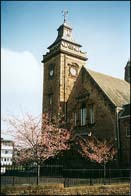 When Maclean was born, Pollokshaws was a village, though an expanding one,
still outwith Glasgow's city boundaries; in fact it was in the Eastwood
district of Renfrewshire. Though its origins go back to medieval times, it
began to assume importance in the later eighteenth century as a textile
weaving town, using the water power of the River Cart and its subsidiary,
the Auldhouse Burn. By the mid nineteenth century several weaving factories
had been established in the village as well as print and dye works, the Auldhouse and Cart often running red with the dyes poured into them.
When Maclean was born, Pollokshaws was a village, though an expanding one,
still outwith Glasgow's city boundaries; in fact it was in the Eastwood
district of Renfrewshire. Though its origins go back to medieval times, it
began to assume importance in the later eighteenth century as a textile
weaving town, using the water power of the River Cart and its subsidiary,
the Auldhouse Burn. By the mid nineteenth century several weaving factories
had been established in the village as well as print and dye works, the Auldhouse and Cart often running red with the dyes poured into them.
The main landed family in this area were the Maxwells of Pollok, whose mansion house lay in what is now Pollok Park to the west of "The Shaws." Though landed proprietors, the Maxwells, like many others, eventually became more dependant on their industrial than their agricultural wealth, and they opened or leased many coal mines on their lands, and took an active part in developing the textile industries of Pollokshaws itself.
When Maclean was born the Maxwells still wielded enormous power in the burgh as employers, Kirk patrons and through the burgh council and its various agencies. This only really began to decline when The Shaws was annexed to Glasgow in 1912. In almost exactly the same amount of land as was occupied by the 12,000 people of the Shaws, lived the Maxwell family on their adjoining estate; such was the wealth gap in Victorian Britain.
Incidentally Maclean approved of the annexation of The Shaws by Glasgow; indeed one of his constant political demands was the extension of the city boundaries to include its contiguous urban areas; a demand as relevant today as it was 100 years ago.
Maclean was born at 59 King Street, just south of the Shawbrig over the Cart, and a street now subsumed by Shawbridge Road. His parents were both immigrants to Pollokshaws, and both victims of the process of clearance and famine which drove many Highlanders to come to Glasgow in the mid nineteenth century. His father Daniel was a potter who came to Glasgow from Mull, after a spell working at Bo'ness. He worked in the Victoria Pottery of Lockhart and Sons in Cogan Street, a couple of minutes walk from King Street: the works opened in 1855 and finally closed in 1952. Daniel died in 1888 from silicosis ("potter's lung") contracted form his work. The Victoria pottery occupied the land now given over to thecar park of the Auldhouse Retail Park.
Daniel's death left John's mother, Anne, to look after four children. Anne had married Daniel at the nearby mining village of Nitshill in 1867. As a child Anne had walked with her mother, neither speaking a word of English, from Corpach near Fort William to join her own father working as a quarryman in Paisley. She had been a weaver before marriage and resumed this trade as a widow at the Auldfield Mill, which lay just across the road in Cogan Street from where her husband Daniel had worked.
The mill was opened by John Cogan in 1851, and occupied the present vacant lot next to the Comet store car park. The village character of The Shaws at this time was emphasised by the fact that the Maclean's Church, the Original Secession Church, lay just round the corner from Cogan Street, in Shawbridge Street. The building is presently the parish Kirk of Pollokshaws. The Shaws was a small world in those days, with the part south of the Shawbrig where the Macleans lived, worked and prayed being almost a village within a village.
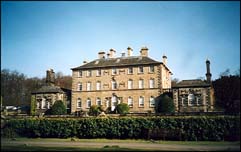 Religion played a far greater part in Victorian working class life than it
subsequently did, and in the Shaws there were ten churches, a Catholic one,
and the others representing every variety of Protestant denomination;
Established Kirk, Free Kirk, various Secession Churches and even a Methodist
Chapel. The 1895 street map of the burgh also shows a dozen public houses in
the short stretch between the Old Town House and the Shawbrig, and the pub
was the other pole of working class life to the kirk in the years before
1900.
Religion played a far greater part in Victorian working class life than it
subsequently did, and in the Shaws there were ten churches, a Catholic one,
and the others representing every variety of Protestant denomination;
Established Kirk, Free Kirk, various Secession Churches and even a Methodist
Chapel. The 1895 street map of the burgh also shows a dozen public houses in
the short stretch between the Old Town House and the Shawbrig, and the pub
was the other pole of working class life to the kirk in the years before
1900.
Maclean was to become a fierce opponent both of religion, and of alcohol (though he never was a campaigning teetotaller, seeing drunkenness as the result, not the cause of working class misery.) He looked to provide the working man with better fare for mind and body; working class education in Marxist political and economic principles, and spent any free time not in the kirk or the pub but in Pollokshaws Public Library.
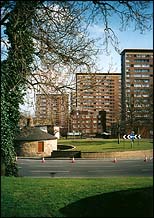 Though his boyhood
Calvinism lapsed, his associated belief in the overriding importance of
education never waned. Calvinists believed a study of the Bible must lead to
God; with equal fervour Maclean believed the study of Marx must lead to
socialism. Maclean is often portrayed as a violent revolutionary. In fact he
believed that Marxist education would eventually led to a peaceful triumph
for socialism at the ballot box, and that violence need only be used in self-defence.
Though his boyhood
Calvinism lapsed, his associated belief in the overriding importance of
education never waned. Calvinists believed a study of the Bible must lead to
God; with equal fervour Maclean believed the study of Marx must lead to
socialism. Maclean is often portrayed as a violent revolutionary. In fact he
believed that Marxist education would eventually led to a peaceful triumph
for socialism at the ballot box, and that violence need only be used in self-defence.
Macleans own education was interesting. He first attended Pollock Academy, which had been established as an elementary school through the efforts of the Burgh council and Sir John Maxwell 8th bart. This was built in 1856 and was part designed by Alexander "Greek"Thomson. It lay on Pollokshaws Road, just opposite the present entrance to Pollok Park, on the vacant site south of the Burgh Hall. It was later converted to a secondary school, and eventually demolished in the 1960s. This school was again only a couple of minutes from the MacLeans' King Street home - though for his secondary education John had to leave The Shaws and go to Queens Park Secondary. But this did not end his connection with the schools and schoolmasters of Pollokshaws.
Maclean completed his teacher's training at the Free Kirk Seminary at Trinity in Glasgow's Park Circus area from 1898-1900; he walked from The Shaws to Trinity every day, a round distance of 10 miles. Later he did his M.A. via evening classes at Glasgow University, again using shanks' pony, apparently in a deliberate attempt to maintain his fitness.
His father's death and his brother's developing tuberculosis had a deep effect on him. He worked as a message boy for various shops in The Shaws and also as a caddie on the nearby Thornliebank Golf Course, which doubtless developed his pedestrian abilities, as did his postie round on student holidays. Maclean was a typical lapsed Calvinist in that he could not be idle, always had to be doing something. On the few short holidays he took in his life, he always fretted to be back back to his propaganda work in Glasgow.
As a schoolteacher Maclean worked in various parts of the south side of Glasgow; in Polmadie, in Strathbungo and in Kinning Park, but he did also teach in Pollokshaws. In 1854 Sir John Maxwell, 8th bart had set up an industrial school in the village, training boys for useful trades. This was rebuilt in a new site at Christian Street in 1907 by a partnership between the Burgh council and Sir John Maxwell, 10th bart - and the school was named after him. From 1908 to 1915 (when he was sacked by the School Board from his day and evening classes for his agitation against the First World War) Maclean taught industrial history and economics at the Sir John Maxwell to classes of industrial workers, using Karl Marx's Capital as the main text book! Hundreds of workers passed through these classes, their fees paid by their trades unions or by local authority grants, over those years, large numbers of them came from the huge new industrial complex of Weir's of Cathcart.
Maclean gave many factory gate meetings at Wier's during strikes before and after 1914, and interestingly Weir's is one of the few industrial plants surviving from that Red Clydeside period today.
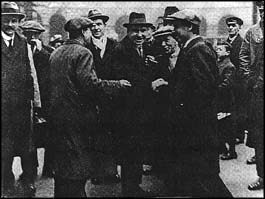 Many of the shop stewards who attended these classes became prominent in the
industrial unrest (Red Clydeside) during and after the First World War.
What is astonishing is that the Eastwood School Board initially paid Maclean
to give these classes, and that Sir John Maxwell himself was a member of the
board. The village atmosphere of the Shaws at this time is further
emphasisised by the fact that one of Maclean's assistants at his evening
classes was another Shaws boy whom he had converted to socialism, James
Maxton (later M.P. for Brigton 1922-46). Maxton?s own father had taught at
Pollock Academy when Maclean was a pupil.
Many of the shop stewards who attended these classes became prominent in the
industrial unrest (Red Clydeside) during and after the First World War.
What is astonishing is that the Eastwood School Board initially paid Maclean
to give these classes, and that Sir John Maxwell himself was a member of the
board. The village atmosphere of the Shaws at this time is further
emphasisised by the fact that one of Maclean's assistants at his evening
classes was another Shaws boy whom he had converted to socialism, James
Maxton (later M.P. for Brigton 1922-46). Maxton?s own father had taught at
Pollock Academy when Maclean was a pupil.
But that is to anticipate. Subsequent to his father's death, followed by the marriage of his sisters and his brother's emigration to South Africa, Maclean moved with his mother to Low Cartcraigs in The Shaws. This was a small cluster of pre-industrial housing and workshops such as a smiddy which lay across Pollokshaws Road (between the road and the railway) from the Old Toll House. Anne had given up work in the mill, and took in a lodger as well as having John's earnings once he became a teacher.
Low Cartcraigs is now occupied by the western portion of the Pollokshaws Road dual carriageway, but the Old Toll House, dating from around 1800 still stands. It was occupied as a dwelling house till the late 1950s. It lost its original function with the abolition of road tolls and became a public house, serving the horse races which were held nearby till 1838. These races led to a poem from a mother warning her son against temptation.
Said she, ?Ye may be trod to death Beneath the horses? paws And mind ye, lad, the sayins true There's queer folk i' the Shaws.
Many of the good folk of The Shaws around 1900 would probably have recalled that saying as their village was assailed by the preachings of a new set of Queer Folk - The Socialists. Indeed Maclean's conversion to socialism took place largely within the intellectual structures of his native Shaws - and
In 1900 Maclean joined the Progressive Union in Pollokshaws, which was an organisation which discussed issues such as socialism, anarchism, the natural sciences and social problems generally. Its main aim was the criticism of organised religion, and they attacked the churches and their teachings at open air meetings on Sunday afternoons.
It is difficult for us to imagine the street culture of politics a century ago; with little bar kirk and pub to entertain them, ( no television or cinema) people flocked to open air political meetings of religious revivalists, temperance campaigners and political agitators, often for the entertainment value. The two most popular open air stances in the Shaws were Shawbrig itself, and the Old Town House, whose steeple still remains today. Hundreds came to listen and to heckle at these meetings.
These meetings were covered in the Pollokshaws News, which reported in 1901 that Maclean had said socialism would reduced drunkeness, 'and the diminution of drunkenness would result in the diminution of crime.' A lively correspondence ensued from these coverages, to which Maclean himself contributed. Friend and foe alike agreed that Maclean was an electrifying speaker.
The Labour Representation Committee (LRC-soon to become the Labour Party) had just been formed as a federation of trades union, Co-ops and socialist organisations. The most left wing of the latter was the Social Democractic Federation (SDF) which was avowedly Marxist and which Maclean joined in 1903, setting up the Pollokshaws branch at an open air meeting outside the Old Burgh Hall in 1906. Local members established a broadsheet, The Pollokshaws Review which was widely distributed, and also distributed leaflets and held many street corner meetings.
The branch had about 100 members "Not bad for a small town," commented Maclean. Lecturers from outside were invited, speaking at the new Burgh Hall, the pride of The Shaws, designed by Rowand Anderson and erected in 1898, to whose construction costs Sir John Maxwell contributed £20,000. Here too Maclean and the SDF would gather to hear the results of their participation in local elections, which was generally disappointing. The SDF won no council seats in The Shaws or in Glasgow, though the more moderate Independent Labour Party did, preparing the way for its staggering success of gaining 10 of Glasgow's parliamentary 15 seats in 1924.
Greater success was had however by the SDF with the rapidly expanding Co-Operative movement. Pollokshaws Co-op lay just south of the present Library in Shawbridge Road, and more or less over the dyke of the Sir John Maxwell school-again emphasising the "village" character of the Shaws at this time. Maclean was an active member of the Pollokshaws Co-operative Society and like others of the SDF argued for a more socialist orientation in the organisation, and he gave lectures to members organised by the Co-Operative Educational Committtee. Maclean was also elected to represent The Shaws at the national Co-op conference in 1905.
Another area of activity was the Eastwood School Board, for which the SDF stood candidates demanding radical education reforms, and where two SDF members were elected in 1908-9. The SDF members called for free, non-denominational education, the raising of the leaving age to 16 and bursaries for further education. It was these SDF men who proposed, and got, Maclean his night-school job at the John Maxwell School.
In 1909 Maclean married Agnes Wood and moved to Langside, to the east of Pollokshaws. His increasingly national political profile, and then his opposition to the First World War resulting in several periods of imprisonment, took him away from the Shaws. The toleration shown by the political establishment to Maclean and his views rapidly evaporated when war was declared, and he was soon fired from his teaching job. These strains led to the breakdown of his marriage. But and on his release from prison he returned to Pollokshaws, and took rooms at 42 Auldhouse Road, a short distance from where he was born, and within sight, across the River Cart, of the factories where his parents had laboured. He was hoping that this would be a base for a reconciliation with his wife, and he had the place redecorated with money he could scarcely afford, hoping vainly that he might be re-employed in a teaching post.
He kept up his frenzied level of political activity, but his health had been seriously sapped by his spells in prison. Also he relied on pamphlet sales and collections at meetings to maintain himself; with the onset of the post war slump these sources of income dried up, and at the end Maclean was apparently living on a diet of oatmeal and dates. Characteristically, at a time when he was giving debilitating outdoor winter lectures, he gifted his only overcoat to a negro from Barbados, Neil Johnston, whom he had given shelter to in his house. From 42 Auldhouse Road Maclean took his last earthly trip to Eastwood cemetery. James Maxton was one of the pallbearers.
Copyright I.R. Mitchell
And what of The Shaws? It was never a classic tenement area, but a mix of pre and post industrial and semi rural buildings, many of which were in worse condition than the tenements of areas like Govan and Brigton. Even in 1955 77% of the population of Pollokshaws lived in one or two rooms, 89% had no bath and 83% of the housing was classed as substandard. The area was comprehensively flattened, leaving only a few public buildings, and replaced by 12 multi-storey blocks of flats. Two things that Maclean would definitely have approved of, however, are that there are far fewer public houses in The Shaws than a century ago - and far fewer churches as well. Or rather three things.
In lieu of death duties, the daughter of Sir John Maxwell left Pollok estate to the city of Glasgow, and it is now a public park, not a private estate. Maclean would have seen that as progress. Bounded by the River Cart, a dual carriageway and the railway line, the Pollokshaws Triangle is still very much of a village, with a community feel to it. Most people know most people, and talking to them I discovered that they still know John Maclean.






